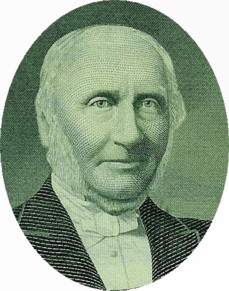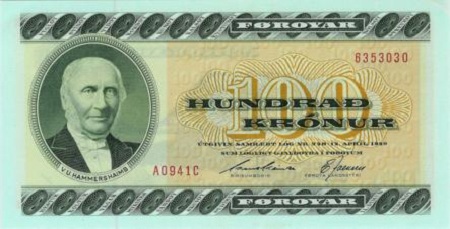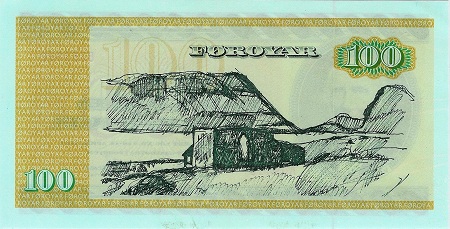FAEROE ISLANDS
Venceslaus Ulricus Hammershaimb

The Faeroe Islands have been under Danish Control after an agreement with Norway in 1380. After the Reformation swept the island in 1538, the Danish Language was made the official language of the Faeroe Islands which included schools and churches, but was not imposed as an everyday language. After the reformation and the ban on the local language, there was almost no Faeroe literature and as a result, several dialects emerged.
During this time, the Faeroe language was only an oral language, which was kept active through story telling and songs. This was a popular pastime in the islands.
These dialects made the older written language almost impossible to return to, so V. U. Hammershaimb developed a system (Orthography) of writing the language which incorporated the different dialects, and also made it simpler to cross from Faeroese into other Scandinavian languages.
Also known as V And Hammershaimb and Venzel Hammershaimb, Venceslaus Ulricus Hammershaimb was a decendant of German nobility who were eventually driven out for protestant beliefs. His ancestor’s family eventually established in Denmark around 1806. From there, they wound up in the Faeroe Islands where, on March 25th 1819, was born V. U. Hammershaimb.
In 1832 V. U. Hammershaimb moved to Denmark and in 1839 attended the University of Copenhagen. While there, V.U. Hammershaimb felt, despite his German/Danish heritage, strong feelings of Faeroese nationality and began his devotion to the Faeroe language. In 1847, now a trained Theologian, V. U. Hammershaimb continued his study and research of the Faeroese language, going throughout the islands annotating the dialects of this language.
In 1846, V. U. Hammershaimb published the Faeroe Orthography (a Faroese dictionary) which is largely unchanged to this day. Because of his work, there began to appear several books in Faeroese annotating the ballads and poems which were before only handed down through oral tradition. V. U. Hammershaimb also continued to write linguistic works, folklore and a work titled Pictures of People’s Lives.
In 1855, V.U. Hammershaimb ministered in Faeroese, which was the first time that the Gospel was ever read in Faeroese. He married Christiane Gad in the same year. Ten years later, he worked for three sessions as a politician. By 1877, the first Faeroese newspaper, “Dimmalaetting” appeared using the orthography of V. U. Hammershaimb.
In 1878 he went again to Denmark where he died in Copenhagen on April 8th, 1909.
V. U. Hammershaimb is best remembered for his contribution to the Faeroe Peoples for his work on their language which helped to give them a national identity while colonized by the Danes. His dictionary was of great importance because it not only made the language permanent in a new written form, but it combined the different dialects into a single cohesive language which enabled all the Faeroese to be able to communicate. In addition to this, he also incorporated some aspects of the sister languages in Scandinavia to make the language easier to understand by other Scandinavian speakers. The language is most similar to Icelandic and Norwegian.
It is estimated that after V. U. Hammershaimb’s Orthography was published, over 75, 000 ballads and tales were recorded from these oral traditions. and preserved in the original language.
Despite the publication of the grammar in 1854, the Faroese language was not acknowledged as the official language of the Faroe Islands until 1937.

